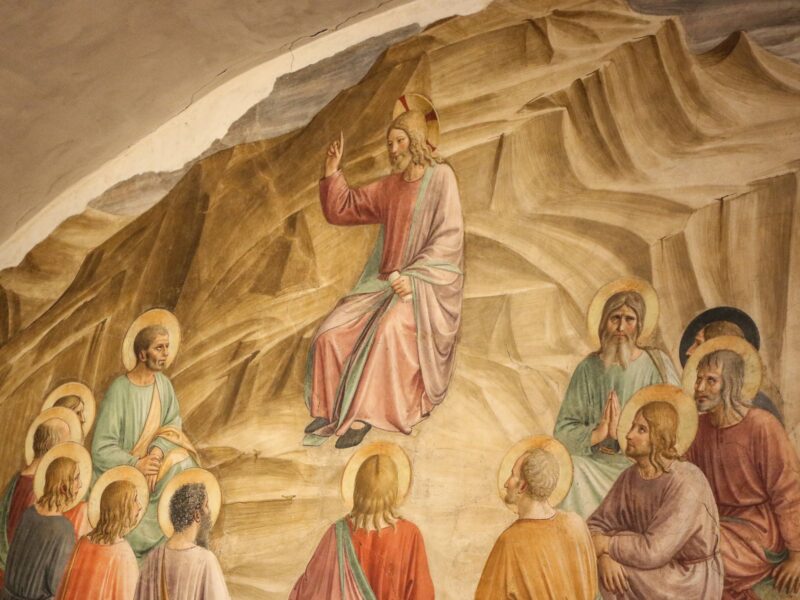
The Triumph of the Cross
Good Friday. Fr David Rocks explains why it is right that Christ carries his own Cross.
This is a day of fasting and abstinence. A day of silence and desolation. And when we arrive at its hour of glory, we witness the drama of a coronation.
On this day we read the Passion according to St John. With him we experience the continuous triumph of Christ throughout his final hour – a triumph marked with suffering and humiliation. The King, crowned with thorns, is presented to us by Pilate: ‘Behold the man.’ Before us is brought one whose appearance is marred beyond human semblance. One whose form is beyond that of the sons of men (Is 52:24).
Behold the man – and what is presented before us is the Son of Man. The Messiah is come. The King of Israel stands in our midst. At the sixth hour of the day of preparation of the Passover, he is handed over to be crucified, to be raised up on the wood of the cross before all people.
Through the streets, among those to whom he is sent, he carries his cross – the throne of his glory. On earth, kings and rulers are sometimes carried on their thrones. The Universal King carries his own throne. This is but right and proper for his dignity, for the power of this King comes not from below, but from above. Jesus is his own master and carries his cross himself, so that his triumph is made known.
He carries his throne dressed in a seamless garment – the garment of a priest. His role is a sacred role. He has come as a priest as well as a king. He offers his life for others and consecrates his death for them as a sacrifice. His mother was told at Cana that his hour had not yet come. Now it has arrived, and she stands by his throne as mother – the mother of us all. She is mother of those for whom he dies, for those who stand beneath his cross as the beloved disciple.
‘It is finished.’ – This is the fulfilment. His hour has come and the will of the Father has been accomplished with perfection. The hour is here – he hands over the Spirit. The gift of the Spirit to the disciples is concurrent with his return to the Father. In his hour of glory and triumph on the cross, the fullness of God’s total self-giving to mankind is shown.
All four gospels narrate the Passion of the Lord. It is only John who records the anointing of the Lord’s body before burial with a blend of spices. The scene in John concludes with a royal burial. The Lord is King: his kingship has come to its fulfilment at the coming of the hour. He is lifted up from the earth, and he draws all things to himself.
We watch in silence as we fast. What else could we do, but be silent? We watch an eternal scene unfold: the eternity of God’s love poured out for us on the Cross.
The blood
ticked from the cross, but it was not
their time it kept. It was no
time at all, but the accompaniment
to a face staring,
as over twenty centuries
it has stared, from unfathomable
darkness into unfathomable light.
(R.M. Thomas, from ‘Crucifixion,’ 1990)


